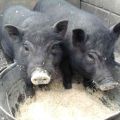How to feed newborn piglets and how to care for them at home
The profitability of pig breeding depends on the physical development of the newborn piglets. The sow is able to feed the litter if she has enough milk. If it is little or not at all, then it is required to introduce artificial feeding from the first day. Complementary foods are introduced in the first month in the presence of breast milk to support weaker piglets so that they keep up in weight with stronger individuals.
Feeding methods
Newborn piglets are fed from a bottle for the first 5-7 days. Then fermented complementary foods are gradually introduced, which are spread in small portions into the feeders. The transition to a new type of feed should be carried out throughout the week. Piglets under one month old need fresh, boiled water in bowls. Every day the piglet drinks from 0.5 to 1 liter of water. The water changes 3-4 times during the day.
The frequency of feeding animals in the first month is 7-8 times a day. To prevent overeating, containers with food uneaten within 20 minutes are emptied, washed and treated with boiling water. Overeating and non-observance of hygienic rules will lead to indigestion, a decrease in weight gain.
The feed rate depends on the breed, the selected type of feeding (fat or meat), ranging from 300 to 500 grams per day per 1 head.
Newborn piglets also need a clean room with a constant air temperature of 30 degrees. With proper nutrition and care, the weight of a piglet will increase 5 times per month.
How to feed newborn piglets without a sow?
For the first week, piglets can only be fed with milk or formula. Then cereals and herbal supplements are gradually introduced. The temperature of milk, formula, cereals, water is from 40 to 38 degrees. Herbal supplements are mixed into cereals or given separately. On the 8th day, animals begin to accustom themselves to eating compound feed.
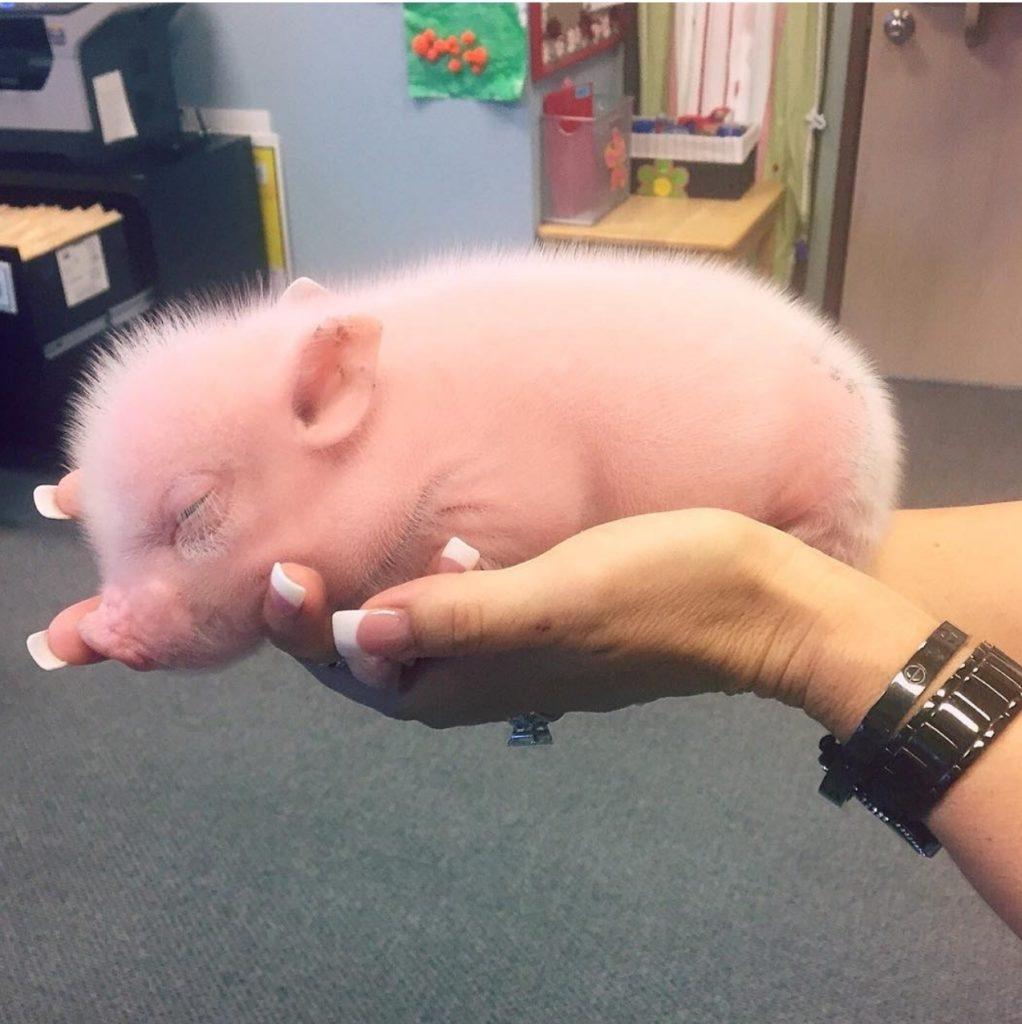
In the diet of growing pigs, it is important to observe the proportions between proteins, fats, carbohydrates. The amount of protein formed in his body (weight gain) depends on the presence of amino acids, catalysts of the digestive process and building material at the same time.
Dairy feeding
At home, instead of mother's milk, the piglet is given whole or skimmed cow / goat milk. Powdered milk can be used as an additive or replacement, which is marked "for piglets".
Prepare the milk mixture according to the instructions supplied with the feed. For the artificial, it becomes more concentrated. The mixture is prepared immediately before feeding; its storage and use after heating is not allowed.Powdered milk mixture / whole milk replacer is used in feeding newborn piglets up to 3 weeks old. Expired product is not allowed to animals.
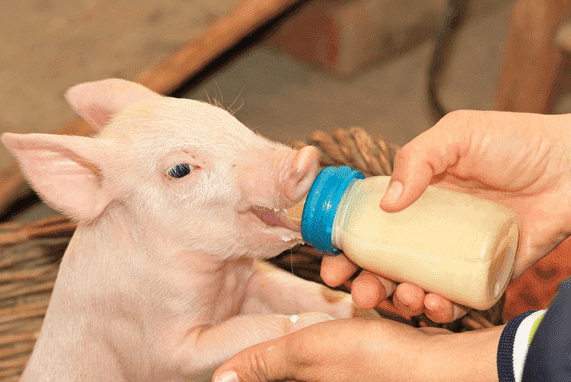
Grain dressing
After 20 days, sour milk, milk-based cereals, boiled potatoes and carrots, vitamins and trace elements are introduced into the diet of piglets. Foods containing a large amount of fiber are not added to the feed. The piglets' stomach is unable to digest coarse fibers, which will lead to diarrhea.
Homemade cereals include:
- 40-50% crushed barley;
- 30-20% chopped oats;
- 9% sunflower meal;
- 6% fishmeal;
- 5% pea cut;
- 3% feed yeast;
- 0.8% chalk;
- 0.2% salt.
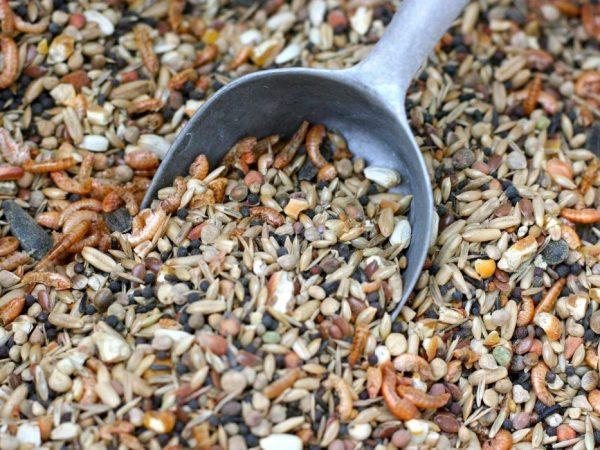
Crushed barley can be replaced with corn chaff (60% of the feed rate for 1 head). Fine grain fractions are mixed with sour milk to keep the feed moist. It is recommended to steam coarse grains at the beginning of the feeding.
Top dressing with compound feed
Piglets, starting from the 2nd week, are given a prestarter (compound feed). Silo corn, peat, subject to cleanliness requirements, can replace the prestarter. Prestarter can be in the form of granules, cereals, granular powder. The composition of the feed corresponds to the characteristics of the digestive system and the energy needs of the body at this stage of development.
It is not recommended to store the prestarter in the pigsty room, as the dairy components will absorb odors and will be unattractive to animals.
Juicy feed
In summer and autumn, complementary foods are prepared from fruits, vegetables, herbs and premixes. In the winter-spring period, ready-made dietary supplements are used.
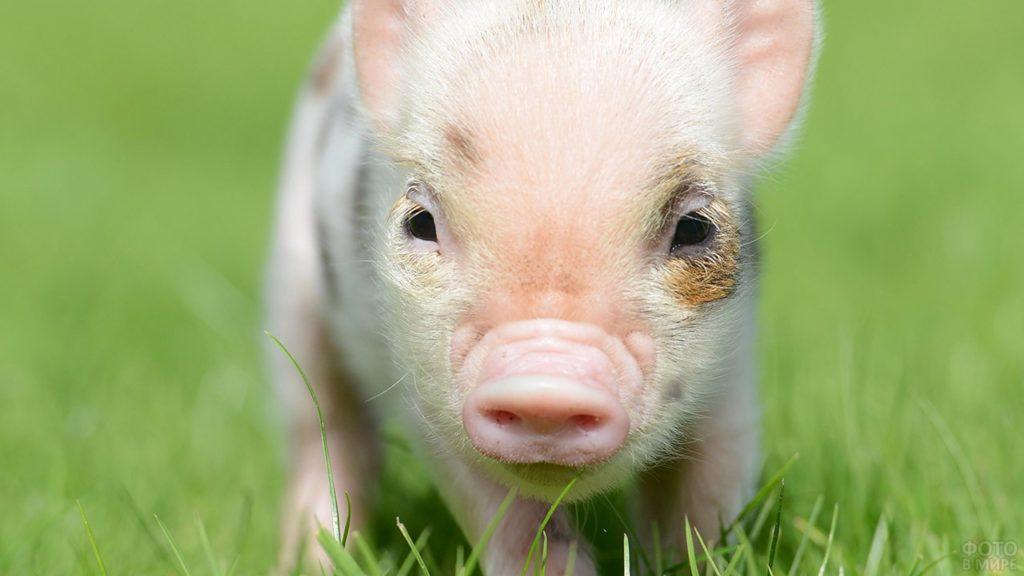
The premixes include:
- fat-, water-soluble vitamins (A, D, E, K, C, B);
- trace elements (iron, copper, manganese, cobalt, iodine, selenium);
- essential amino acids (lysine, methionine, threonine, tryptophan).
Vitamins are essential to support and activate the hormonal immune system of animals. Mineral elements affect the water-salt metabolism in the body, the development of muscle tissue. Amino acids are essential for the efficient functioning of the digestive system, which contributes to rapid weight gain. At home, you can use as mineral supplements:
- charcoal;
- red clay;
- a piece of chalk;
- eggshells.
From greens, newborn piglets are given a width (first chopped, then whole).
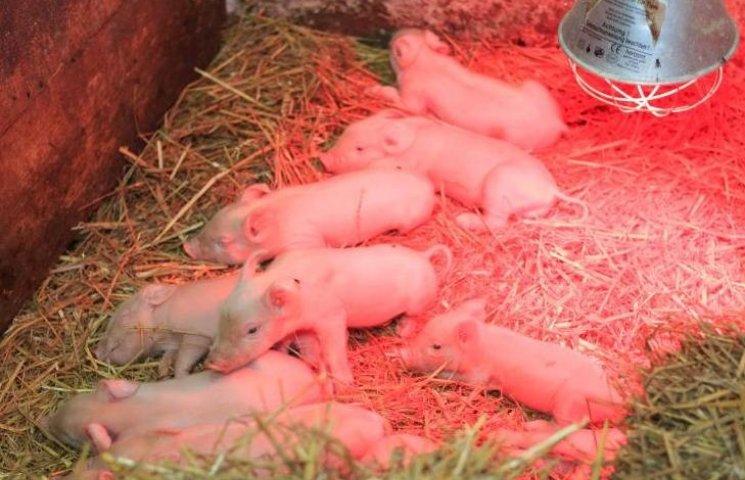
The stalks, leaves, seeds of the squid (amaranth thrown back) contain:
- protein;
- carbohydrates;
- vitamins C, A, D, E;
- provitamin rutin;
- macronutrients (iron, calcium, zinc, phosphorus, magnesium);
- lysine;
- tannins;
- cellulose.
Vegetable crops are cooked: potatoes, carrots. Fruits are used in complementary foods, ripe, mainly pome fruits (apples, pears). Apricots, cherries are added to seedless food.
What is prohibited to give?
Piglets should not be given products that are not completely thawed, touched by mold. The weak immune system of newborn piglets will not be able to withstand E. coli, which will lead to poisoning and death of the livestock. It is not allowed to include in the diet plants / plant parts containing solanine:
- green potatoes;
- its sprouts;
- tops;
- spurge;
- buttercup.
Potato broth, boiled beets are not added to the feed. Fruits should not be spoiled by garden pests, fungal, bacterial infection.






